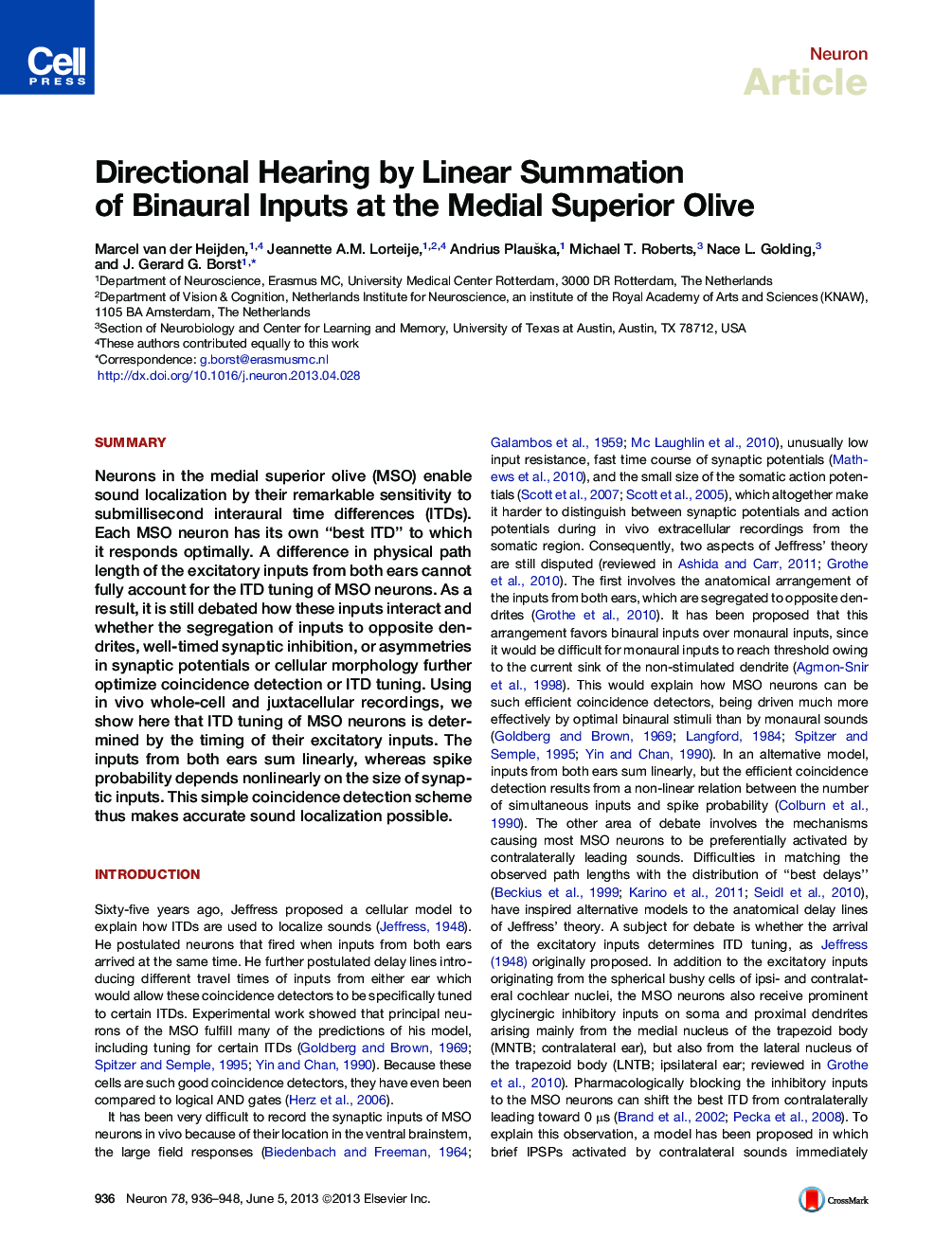| Article ID | Journal | Published Year | Pages | File Type |
|---|---|---|---|---|
| 4321351 | Neuron | 2013 | 13 Pages |
•ITD tuning of MSO neurons can be predicted from their inputs•Inputs from both ears sum linearly•The nonlinear input-output relation helps in coincidence detection
SummaryNeurons in the medial superior olive (MSO) enable sound localization by their remarkable sensitivity to submillisecond interaural time differences (ITDs). Each MSO neuron has its own “best ITD” to which it responds optimally. A difference in physical path length of the excitatory inputs from both ears cannot fully account for the ITD tuning of MSO neurons. As a result, it is still debated how these inputs interact and whether the segregation of inputs to opposite dendrites, well-timed synaptic inhibition, or asymmetries in synaptic potentials or cellular morphology further optimize coincidence detection or ITD tuning. Using in vivo whole-cell and juxtacellular recordings, we show here that ITD tuning of MSO neurons is determined by the timing of their excitatory inputs. The inputs from both ears sum linearly, whereas spike probability depends nonlinearly on the size of synaptic inputs. This simple coincidence detection scheme thus makes accurate sound localization possible.
